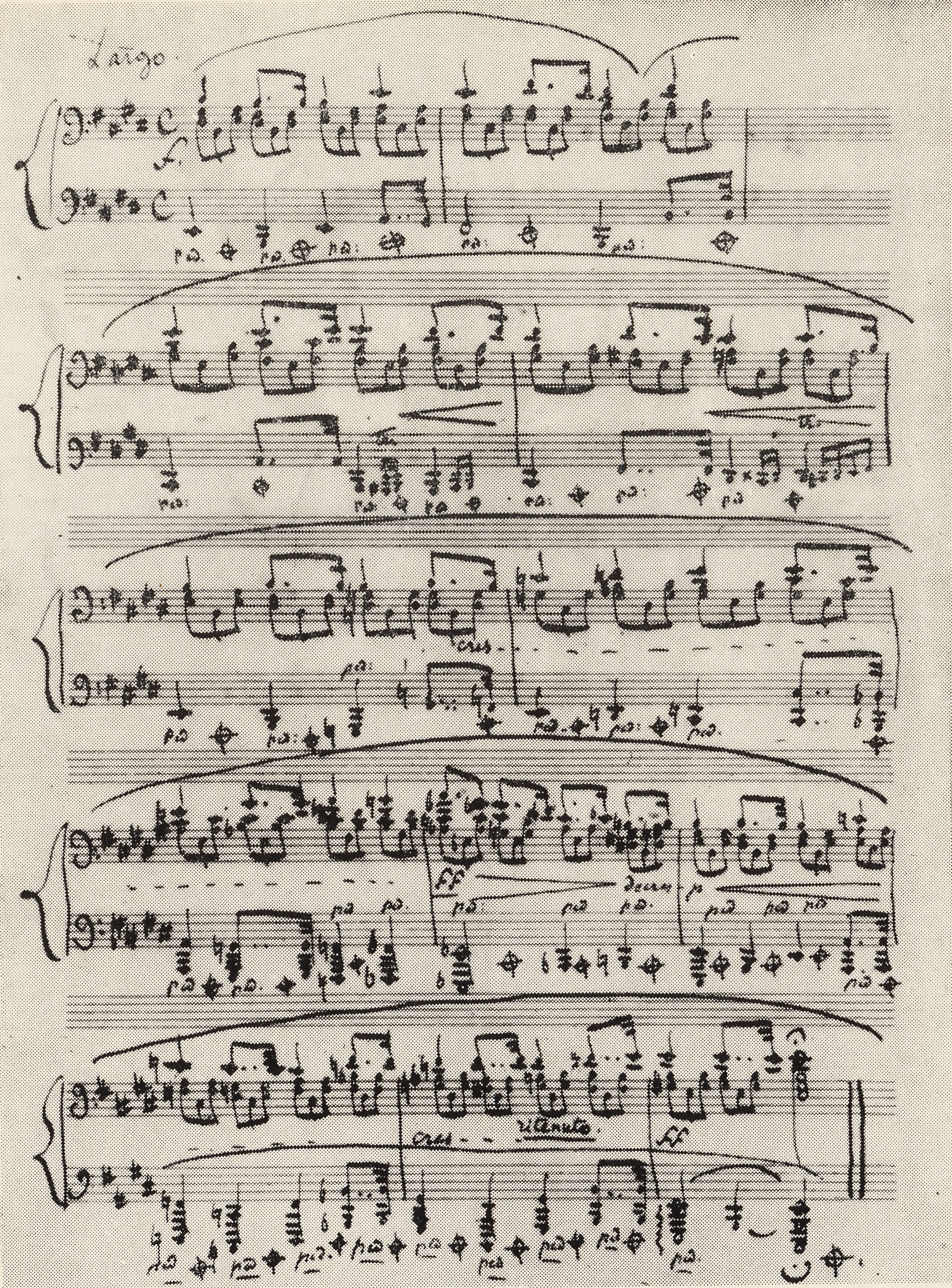Op. 2, Variations in B♭ major
Op. 10, 12 Etudes
Op. 11, Concerto in E minor
Op. 21, Concerto in F minor
Op. 22, Polonaise in E♭ major
Op. 24, 4 Mazurkas
Op. 25, 12 Etudes
Op. 26, 2 Polonaises
Op. 27, 2 Nocturnes
Op. 28, 24 Preludes
Op. 30, 4 Mazurkas
Op. 35, Sonata in B♭ minor
Op. 50, 3 Mazurkas
Op. 63, 3 Mazurkas
Op. 64, 3 Waltzes
(Op. 4), Sonata in C minor




Op. 28 No. 9, Prelude in E major
The Prelude in E is the only piece by Chopin in which the R.H. part is written entirely in the bass clef on the top stave*. It is noteworthy that the composer opted for such a notation probably only just when writing A, which is evidenced by a bass clef added after the treble one and by the 1st R.H. chord, written and crossed out on the bottom stave. Therefore, one can assume that in the initial notation of the Prelude the entire R.H. part (perhaps without the topmost notes) was written on the bottom stave, in accordance with the Chopinesque common modus operandi – cf., e.g. Prelude in E Minor, No. 14 or Scherzo in C
Minor, No. 14 or Scherzo in C Minor, Op. 39, b. 1-6 and 9-14, 486-497 and 502-505. The above hypothesis is confirmed by the notation of the L.H. part – the stems of the entire part, even in the lowest register, point downwards (we do not keep it in our transcriptions). An understandable habit of beginning the top stave with a treble clef came out at the beginning of the 3rd and 4th lines of the text – in A one can see there crossings-out of fragments of treble clefs, with which Chopin wanted, as a matter of course, to open a new line.
Minor, Op. 39, b. 1-6 and 9-14, 486-497 and 502-505. The above hypothesis is confirmed by the notation of the L.H. part – the stems of the entire part, even in the lowest register, point downwards (we do not keep it in our transcriptions). An understandable habit of beginning the top stave with a treble clef came out at the beginning of the 3rd and 4th lines of the text – in A one can see there crossings-out of fragments of treble clefs, with which Chopin wanted, as a matter of course, to open a new line.
* In general, Chopin carefully avoided introducing the bass clef on the upper staff. There are only a few examples of such notation, e.g. Variations in B , Op. 2, bars 50-51, 302-303, Polonaise in A
, Op. 2, bars 50-51, 302-303, Polonaise in A , Op. 53, bars 153-154.
, Op. 53, bars 153-154.
Compare the passage in the sources »
category imprint: Corrections & alterations; Source & stylistic information
issues: Deletions in A
notation: Shorthand & other

